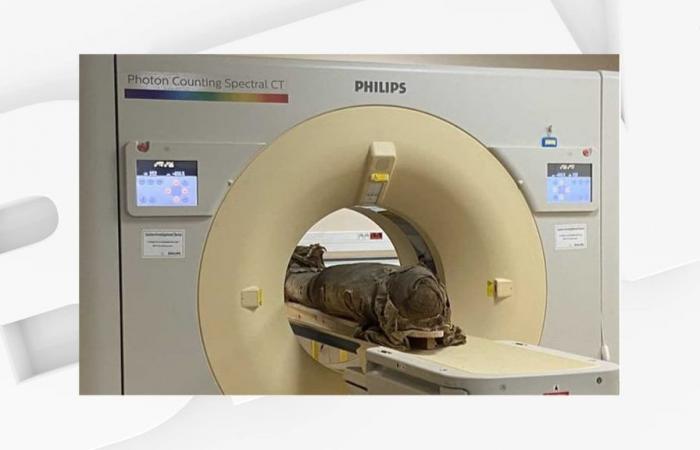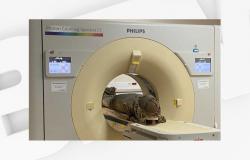
Preserved at the Museum of Fine Arts and Archeology in Besançon, a 3,000-year-old mummy traveled to Lyon to have a scanner.
The Hospices Civils de Lyon welcomed their oldest patient ever recorded: 3,000 years old. The Séramon mummy, usually kept at the Besançon Museum of Fine Arts and Archeology, came to have a scanner. The objective: “to reveal the best kept secrets beneath the mummy’s wrappings.”
Subjecting the mummy Séramon to this medical examination, on such an advanced scanner, constitutes a world first, affirms the Hospices Civils de Lyon in its press release.
Thanks to this examination, scientists should be able to read for the first time the hieroglyphs inscribed on the heart scarab of Seramon, or to identify the amulets of the necklace which had not been able to be identified until now.
Séramon suffered from osteoarthritis, among other things
The scanner also made it possible to learn more about Séramon’s pathologies. The mummy suffered from vertebral fractures, hip osteoarthritis and carotid atheroma.
This brand new non-invasive imaging method therefore makes it possible to study this French historical heritage in more depth and without risk of deterioration.
“The interest of this approach is to combine a modern medical vision carried by the Claude Bernard Lyon 1 University and the Hospices Civils de Lyon, with historical questions around the mummy Séramon”, underlines Salim Si-Mohamed, professor at the UCBL, doctor at the Hospices Civils de Lyon and expert in SPCCT technology.
In 1984, a first x-ray of the Séramon mummy detected opacities that could correspond to amulets, confirmed by a more powerful scanner in 2007 carried out by Dr Samuel Merigeaud, Imaneo/Tridilogy radiologist and expert in the field of mummy imaging.
Still invisible information about patients
If this scanner already allows miracles in terms of archaeological research, it also revolutionizes the “evaluation of pulmonary diseases”. The device, which has all the advantages of a traditional scanner, provides access to new information “previously invisible on patients”.
It was developed by researchers from the Center for Research in Image Acquisition and Processing for Health (CREATIS – CNRS/INSA Lyon/Inserm/Université Claude Bernard Lyon 1), in partnership with the company PHILIPS.
Concerning the Seramon mummy, other discoveries are certainly to come, as examination techniques and technologies are modernized. This learning about the treatment of the body and mummification, but also about the life of the deceased and their physical characterization, will allow for better conservation and possible restoration.





